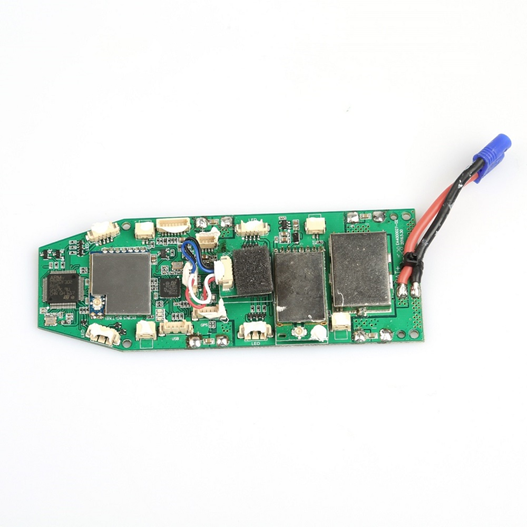Power system thick copper PCB
Product Name: Thick Copper PCB
Thickness: 112um
Number of Layers: 1+8+1
Sheet: FR4 Tg170
Board Thickness: 1.6mm
Panel Size: 121.6*95mm/2
Surface Treatment: HASL, OSP, immersion gold, immersion silver
Solder Mask Options: Green, blue, black, white, red, purple, yellow
Silk screen color: white, yellow, black
Power SupplySystem PCB design is the key to ensure power supply stabilityand efficiency.
Here are some key points for power system PCBdesign:
Material selection: Selecting the right PCB material is crucial to the performance of the power system. Materials with low dielectric constant and low loss factor help improve the signal transmission speed and the stability of the power supply. :
2.Impedance control:Impedance control in the power supply system helps to ensure the stability of the power supply and reduce voltage drop. Reasonable impedance design can avoid signal distortion and power supply fluctuation.
3. Power and ground plane:The design of the power and ground planes is critical to the stability of the power system. A good plane design can provide a low-impedance power path and reduce power noise.
4. Thermal Management:The power system may generate a lot of heat when working, so the PCB design needs to consider the heat dissipation problem. Reasonable layout and heat dissipation design can improve the efficiency and reliability of the power system.
5. Overcurrent protection:The overcurrent protection design in the power supply system can prevent damage caused by excessive current. By using appropriate protection components and design, the safe operation of the power system can be ensured.
6. Decoupling capacitors:Decoupling capacitors help stabilize the power system and reduce power noise. Reasonable layout of decoupling capacitors can improve the stability of the power system.
7.PCB layout:The PCB layout of the power system should consider the integrity of the signal and the stability of the power supply. Reasonable layout can reduce electromagnetic interference and improve power efficiency.
8.In multi-layer PCB design, power segmentation can improve the stability of the power system. Proper segmentation can reduce the interference between different power supplies.
9.After the power system PCB design is completed, rigorous testing and verification are required to ensure that its performance meets the design requirements. Through the above points, the quality and performance of the power system PCB design can be ensured, thereby improving the stability and reliability of the entire power system.
Power SupplySystem PCB design is the key to ensure power supply stabilityand efficiency.
Here are some key points for power system PCBdesign:
Material selection: Selecting the right PCB material is crucial to the performance of the power system. Materials with low dielectric constant and low loss factor help improve the signal transmission speed and the stability of the power supply. :
2.Impedance control:Impedance control in the power supply system helps to ensure the stability of the power supply and reduce voltage drop. Reasonable impedance design can avoid signal distortion and power supply fluctuation.
3. Power and ground plane:The design of the power and ground planes is critical to the stability of the power system. A good plane design can provide a low-impedance power path and reduce power noise.
4. Thermal Management:The power system may generate a lot of heat when working, so the PCB design needs to consider the heat dissipation problem. Reasonable layout and heat dissipation design can improve the efficiency and reliability of the power system.
5. Overcurrent protection:The overcurrent protection design in the power supply system can prevent damage caused by excessive current. By using appropriate protection components and design, the safe operation of the power system can be ensured.
6. Decoupling capacitors:Decoupling capacitors help stabilize the power system and reduce power noise. Reasonable layout of decoupling capacitors can improve the stability of the power system.
7.PCB layout:The PCB layout of the power system should consider the integrity of the signal and the stability of the power supply. Reasonable layout can reduce electromagnetic interference and improve power efficiency.
8.In multi-layer PCB design, power segmentation can improve the stability of the power system. Proper segmentation can reduce the interference between different power supplies.
9.After the power system PCB design is completed, rigorous testing and verification are required to ensure that its performance meets the design requirements. Through the above points, the quality and performance of the power system PCB design can be ensured, thereby improving the stability and reliability of the entire power system.





